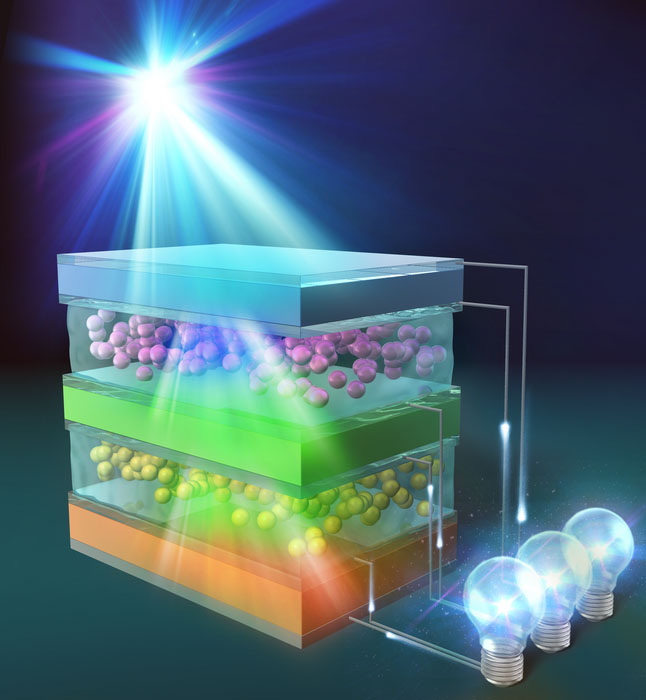| Aug 03, 2022 |
Enhancing solar efficiency with upconversion
(Nanowerk News) Solar cell technologies have been improving incrementally over the decades, but energy conversion has remained less than optimal.
|
|
Now, researchers at Kyoto University have developed a novel wafer bonding technology using an optical upconversion material that transforms sunlight to shorter-wavelengths. This new semiconductor process utilizes the interface's optical function for bond formation (Applied Physics Letters, "Upconversion semiconductor interfaces by wafer bonding for photovoltaic applications").
|
 |
| Semiconductor bonding mediated by upconversion material. (Image: Katsuaki Tanabe, Kyoto University)
|
|
The team created a stacked structure consisting of a thin silicon film mimicking the upper subcell of a multi-junction solar cell and a silicon solar cell wafer; these layers were bonded with an adhesive made from upconversion nanoparticles dispersed in a hydrogel.
|
|
Conventional multi-junction solar cells are created with the vapor phase growth method. However, this method is limited by lattice matching in semiconductor materials.
|
|
The team, led by Katsuaki Tanabe, has applied their wafer bonding method to the production of a range of optical and electronic devices, demonstrating that different semiconductor materials can be stacked in any combination without the restriction of lattice matching.
|
|
"Even inherently non-absorbed light of longer wavelengths in the lower subcell of a multi-junction solar cell could be used to enhance the efficiency of the overall energy conversion via our upconverting interface," concludes the author.
|

